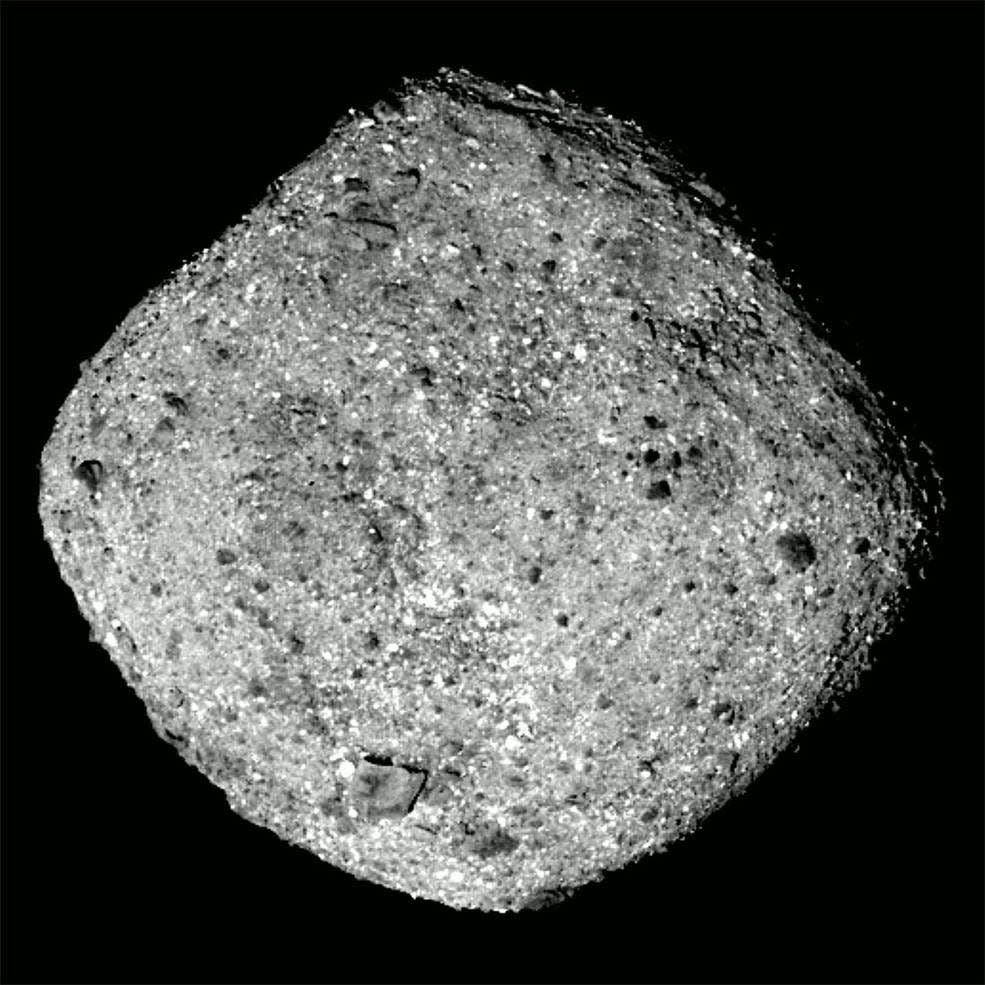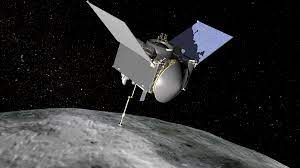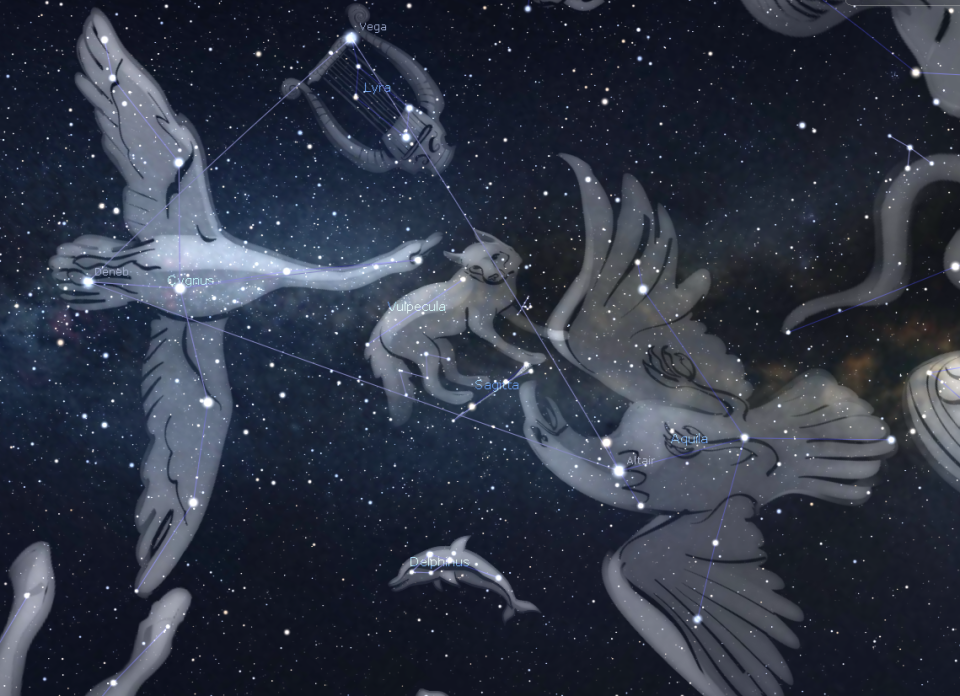Sky Shorts: Asteroid sample OSIRIS-Rex returning to Earth

Preparations are underway for the return of NASA’s first asteroid sample on Sept. 24. The OSIRIS-Rex, or Origins Spectral Interpretation Resource Identification Security Regolith Explorer, mission launched in September 2016 and arrived at the potentially hazardous asteroid Bennu in December 2018.
It took scientists nearly two years to map Bennu and to determine the site for the sample collection. On Oct. 20, 2020, OSIRIS-Rex collected rocky material during its Touch-and-Go (TAG) sample collection maneuver. The sample was successfully stored in the Sample Return Capsule (SRC) and is on its way back to Earth.
The capsule is scheduled to land Sept. 24 in a drop zone 80 miles west of Salt Lake City. This zone is within the U.S. military’s Utah Test and Training Range. A recovery team will welcome the capsule. Multiple simulations are being carried out to practice the handling of the capsule and its special cargo.
The OSIRIS-Rex mission currently holds two world records. Not only is Bennu the smallest object that a spacecraft ever orbited but it is also the closest orbit of a small body.
So, why did NASA choose Bennu? Bennu was discovered in 1999 and unlike other asteroids in the main asteroid belt, between Mars and Jupiter, Bennu’s orbit brings it close to Earth every six years. Bennu is also the right size, bigger than the Empire State Building, which allows it to rotate at a much slower rate than smaller asteroids, making it more approachable. Bennu is carbon rich, very old, well preserved and could have delivered building blocks of life to Earth and the other planets.

Like other asteroids, Bennu is rich in iron, aluminum and platinum. In the future, if humans can extract hydrogen and oxygen from these minerals, it would be the key to deep space travel. Finally, potentially hazardous asteroid, Bennu, could possibly impact Earth around 2182. The sample will help astronomers and scientists learn about the physical and chemical properties in the event of mitigating impact in 2182.
After dropping off the sample, OSIRIS-Rex will head to a second asteroid, the potentially hazardous Apophis. The name of the extended mission will be called OSIRIS-APEX.
Night Sky for September
Seven months until the Total Solar Eclipse!
Planets and the Moon:
Saturn continues to make a splendid appearance from dusk to dawn. At the start of the month, Saturn shines at magnitude 0.4 and dims 0.1 magnitude by midmonth. Saturn rises in the southeast after sunset and climbs to its highest point south at midnight on Sept. 1. By the month’s end, it will reach its highest point in the south at 10:00 pm. The gibbous Moon pairs with Saturn on Sept. 26.
Mars is very low in the western sky and by midmonth it departs from the evening sky. You will need binoculars if you want to give the view of Mars a try. It is now at its furthest distance from Earth at 234 million miles away. Mars pairs with the very slender crescent Moon on Sept. 16.
Jupiter rises around 10:00 pm in early September. By the month’s end it will be 20 degrees high in the east at 10:00 pm. Jupiter shines brightly at magnitude -2.6 and pairs with the Moon on Sept. 4.
This is the best month of the year to spot Neptune, which reaches opposition on Sept. 19. On Sept. 10, Neptune is less than one degree north of the star 20 Piscium, which is part of the constellation Pisces. You will need binoculars.
Uranus can be found 8.5 degrees southwest of the Pleaides star cluster and 7.5 degrees northeast of Jupiter. You will need binoculars.
Venus is dazzling in the morning sky, one hour before sunrise. It reaches its greatest brilliancy, magnitude -4.8, on September 19. The crescent Moon pairs with Venus on September 11.
Mercury’s best morning show occurs this month. By Sept. 16, it is magnitude 1.0, eight degrees below the star Regulus. On Sept. 20, it brightens to magnitude 0 and rises 90 minutes before the Sun. It reaches greatest western elongation, 18 degrees, on Sept. 22, shining at magnitude -0.3. It reaches magnitude -1.0 on Sept. 29.
Night Sky Spotlight:

As summer winds down, head out on a clear night, face east. Look high overhead and you will see three bright stars. The brightest of the three, Vega, is a blue-white star 25 light years away. Down and slightly left is Deneb, a blue-white supergiant, 1500 light years away. It is one of the most luminous stars in our Milky Way galaxy. To the right is Altair, a white star, 17 light years away. When you connect these three stars, they form a triangle. We call this the Summer Triangle.
The Summer Triangle is an asterism, not a constellation. An asterism is a pattern in the sky and this pattern is so obvious that it is recognized throughout the world. Just like the Big Dipper asterism, the Summer Triangle can be used as a seasonal calendar. In late spring, early summer the Summer Triangle can be found in the eastern sky. As summer fades to autumn the Summer Triangle is high overhead. In late autumn, early winter it is low in the west.
The three stars are part of three different constellations. Vega is a part of Lyra, the Harp, Deneb is part of Cygnus, the Swan and Altair is part of Aquilla, the Eagle. Cygnus is the easiest constellation to imagine. Start with Deneb, imagine this to be the tail of Cygnus, the Swan. To the right will be three stars in a line. These would be the outstretched wings. Extending from the wings would be the long neck and head of the swan. The head of Cygnus is a double star, Albireo.
Through a telescope, Albireo is a beautiful sight! The Summer Triangle leads you right to the Milky Way. Running right through the Summer Triangle is a multitude of stars, the Milky Way. But for most of us, light pollution fades so many stars. So, grab your binoculars. Starting inside the Summer Triangle, scan right and left. You will see an abundance of stars. Another binocular delight can be a challenge. Find Vega and Altair, two of the Summer Triangle stars. Scan one third of the way up from Altair to Vega. You will find a group of stars that resemble a upside down coat hanger.
For further night sky details, maps and audio, visit my website www.starrytrails.com.
Visit the Hoover Price Planetarium
There will be planetarium shows every Saturday starting Sept. 9. Visit www.mckinleymuseum.org, for show dates and times! Planetarium shows are free with museum admission. The Planetarium is located inside the McKinley Presidential Library & Museum, 800 McKinley Monument Drive, NW in Canton. For more information, call the museum at 330-455-7043.

This article originally appeared on The Alliance Review: Sky Shorts: Asteroid sample OSIRIS-Rex returning to Earth

